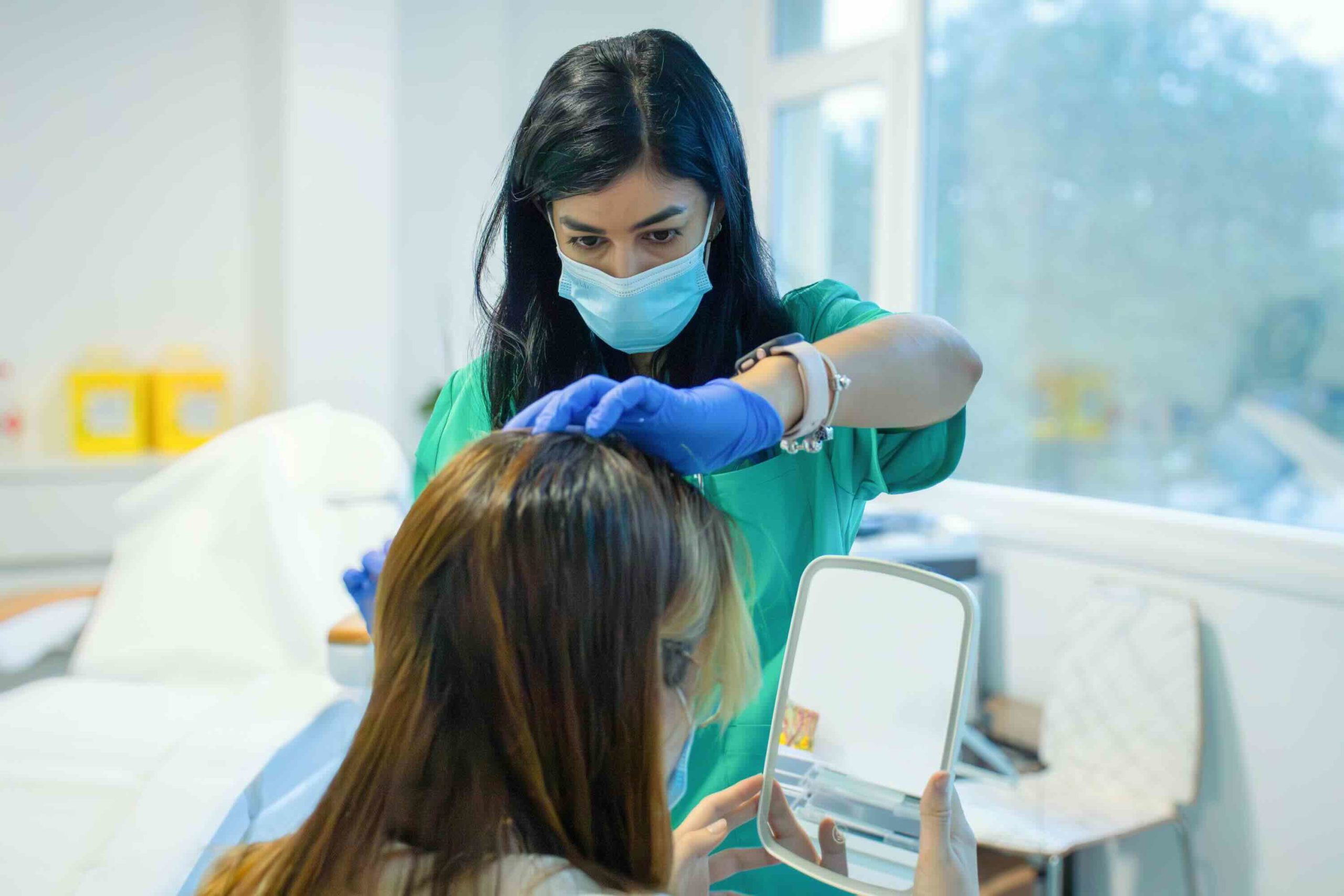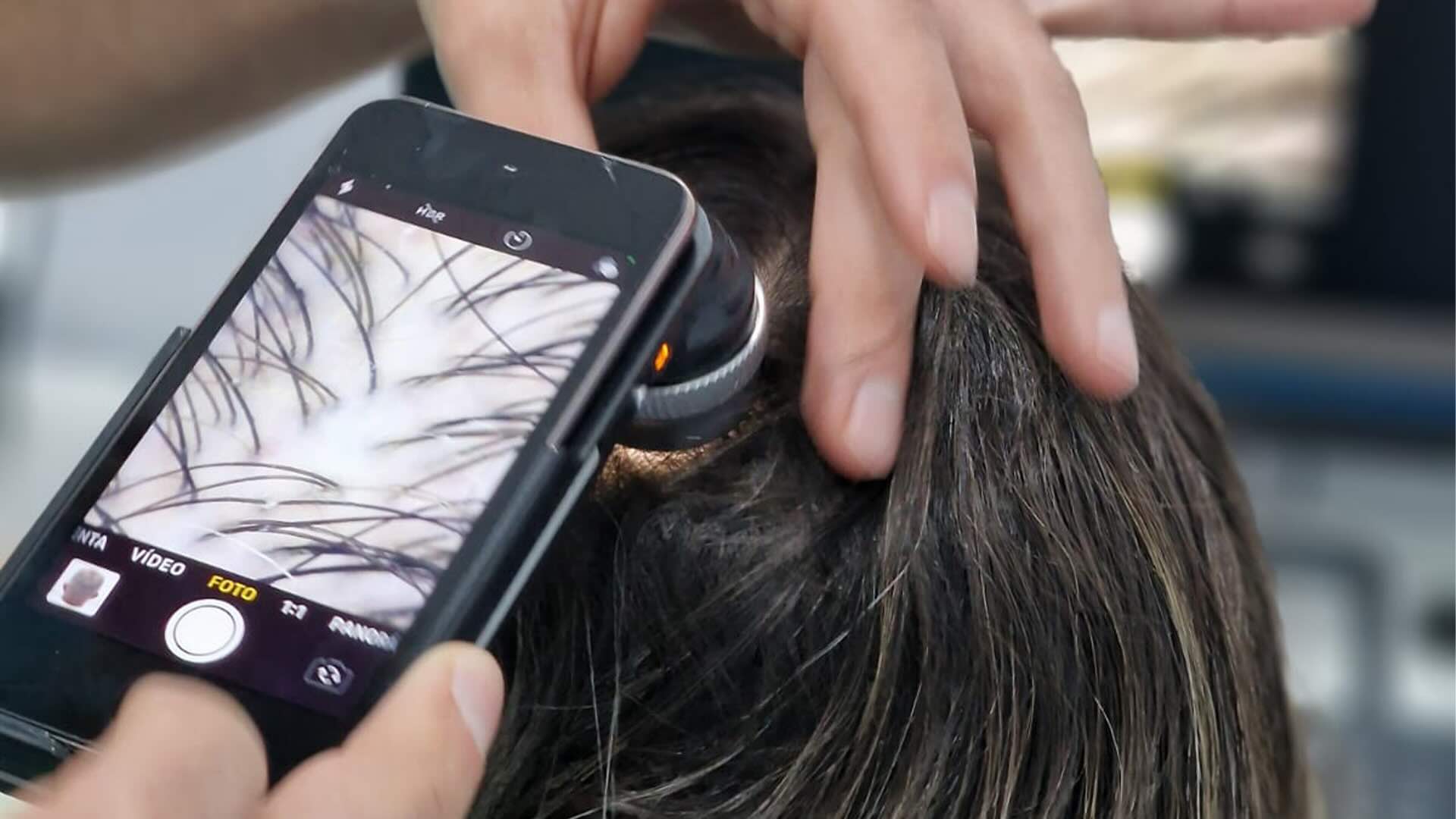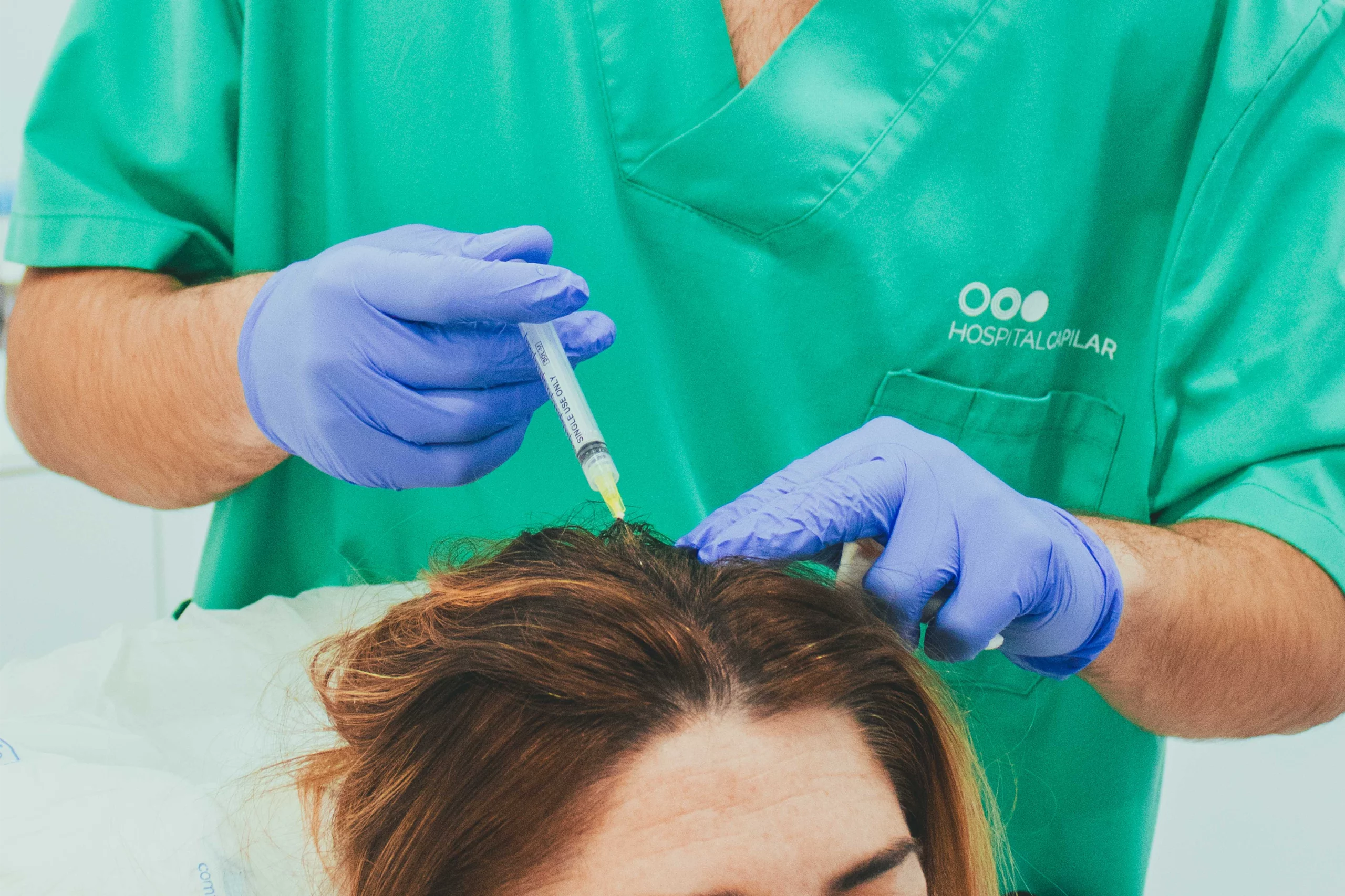
REVIEWED BY MEDICAL COMMITTEE

Hair loss is a problem that affects a large part of the population, and in a large percentage of cases it triggers baldness. The usual thing is that it is what is known as androgenetic or androgenic alopecia and, although there is a higher incidence in men, there are also cases of androgenetic alopecia in women. In these cases, The hair that falls does not grow back, generating areas with a lack of hair density or baldness. This is why knowing the symptoms, together with an early diagnosis and the start of medical treatment, is important to stop the progression of this disease in time and avoid a greater visual impact.
Androgenetic alopecia is considered a chronic disease by the World Health Organization (WHO). It is a type of hormonal alopecia with a strong genetic component, that is, many women with androgenetic alopecia have a genetic predisposition to develop it. It has a higher incidence in men, affecting around 60% of the population; while androgenetic alopecia in women occurs to a lesser extent, although significantly, it is estimated that around 25% of women suffer from it. It usually occurs in postmenopausal women or after giving birth, although symptoms can develop at any age.
Androgenetic alopecia in women causes irreversible hair loss and occurs due to a hormonal imbalance. Specifically, the enzyme 5 alpha reductase synthesizes testosterone, a male sex hormone also present in women, converting it into what is known as dihydrotestosterone. It is this that, by mistake, attacks the Hair follicles causing its atrophy and subsequent fall, generating baldness.
This sickness There is no cure as such, but there are effective medical treatments to stop its progression.. This is why recognizing the symptoms early and putting yourself in the hands of professionals is crucial to prevent baldness from becoming more widespread.
It is normal and completely natural for hair to fall out. Specific, hair falls out an average of 100 hairs a day due to own hair life cycle. In this sense, the hair enters its telogen phase and it falls off, but the hair follicle remains, so another hair will come out. However, when hair loss worsens and we notice that many more hairs are shed, it may be a symptom of androgenic alopecia.
Dihydrotestosterone atrophies hair follicles, causing what is known as hair miniaturization. That is, the hair begins to become finer until it eventually disappears. If you notice thinning hair, noticeable in pigtails or braids, it is recommended to consult an expert.
If hair loss is accompanied by loss of density, that is, we notice that we do not have as much hair as before, and some areas even begin to thin, it is a symptom of female androgenetic alopecia. The lack of density in the case of androgenetic alopecia in women usually occurs diffusely throughout the scalp, although it has a greater incidence in the hair part, making it wider, and in the temporal areas. This is an important sign, and we must put ourselves in the hands of professionals.
The most obvious symptom of androgenic alopecia is baldness. While in men it is more localized in the area of the entrances and crown of the head, In women it occurs more diffusely. Baldness will be visible, above all, in the hair parting and temporal areas normally, although with a lack of density throughout the scalp. Given these symptoms, it is highly recommended to consult with an expert.

Androgenic alopecia is a chronic disease that has no cure, but there is treatment to stop its symptoms. Medical treatment is adjusted to each patient based on the degree of alopecia, which is measured with the Ludwig scale, condition of the scalp and general health of the patient, among others. Furthermore, since these are drugs, their medical evaluation and prescription are essential, so It is important to go to a specialized hair clinic to begin medical monitoring of alopecia..
Although it will always depend on medical criteria, the usual thing is to combine the use of two oral drugs. First of all, it uses the Minoxidil. It is a vasodilator that improves the arrival of nutrients and oxygen to the hair follicles, thickening the hair and treating the miniaturization of hair typical of androgenetic alopecia and reducing hair loss. With this drug, the hair will look stronger, thicker and with greater hair density.
On the other hand, it is recommended to use Finasteride o dutasteride, according to medical criteria. These are two antiandrogens that inhibit the action of dihydrotestosterone, stopping hair loss and therefore the progression of androgenetic alopecia.
Another option to combat androgenetic alopecia in women is to resort to infiltrated treatments in specialized hair clinics. Specifically, there are 2 highly beneficial treatments to care for hair and stop hair loss in cases of androgenetic alopecia in women.
On the one hand, the hair mesotherapy. These are infiltrations into the scalp of vitamins, peptides and drugs adapted to the patient, specifically Dutasteride. This treatment stops hair loss, improves quality and promotes hair growth.
El Platelet Rich Plasma (PRP), on the other hand, is another highly effective hair treatment to stop hair loss. It consists of extracting a small amount of blood from the patient and subjecting it to a centrifugation process, thus obtaining plasma enriched with growth factors from the blood itself. This plasma is injected throughout the scalp, stimulating the proper functioning of the hair follicles and promoting tissue regeneration.
Hair treatments, as well as the drugs mentioned above, slow the progression of androgenetic alopecia in women but will not cause hair to grow back where it stopped growing naturally. To regain hair in the areas where there was follicular loss, the only way is to resort to hair graft.
Contrary to what you may think, hair transplant is also focused on women, and not only on men. It is a technique that also offers very good results in female patients with androgenetic alopecia.
It is an outpatient, minimally invasive surgery that consists of extracting healthy hair follicles from the donor area and implanting them in the area affected by alopecia. The results of this technique are definitively seen once the first year has passed since surgery, although after 6 months the first changes can already be seen.

At the first symptoms of alopecia, it is essential to go to a specialized hair clinic to stop its progression as soon as possible. In Hospital Capilar You will find a team of highly experienced professionals who will recommend the most effective for your particular case. Request your medical diagnosis at NO cost and take care of your hair.
Sanitary Reg. No. Pontevedra: C-36-003121 Sanitary Reg. No. Madrid: C517593 Sanitary Reg. No. Murcia: 30800014


Copyright © 2021 - Legal Notice and Privacy Policy - Cookies policy